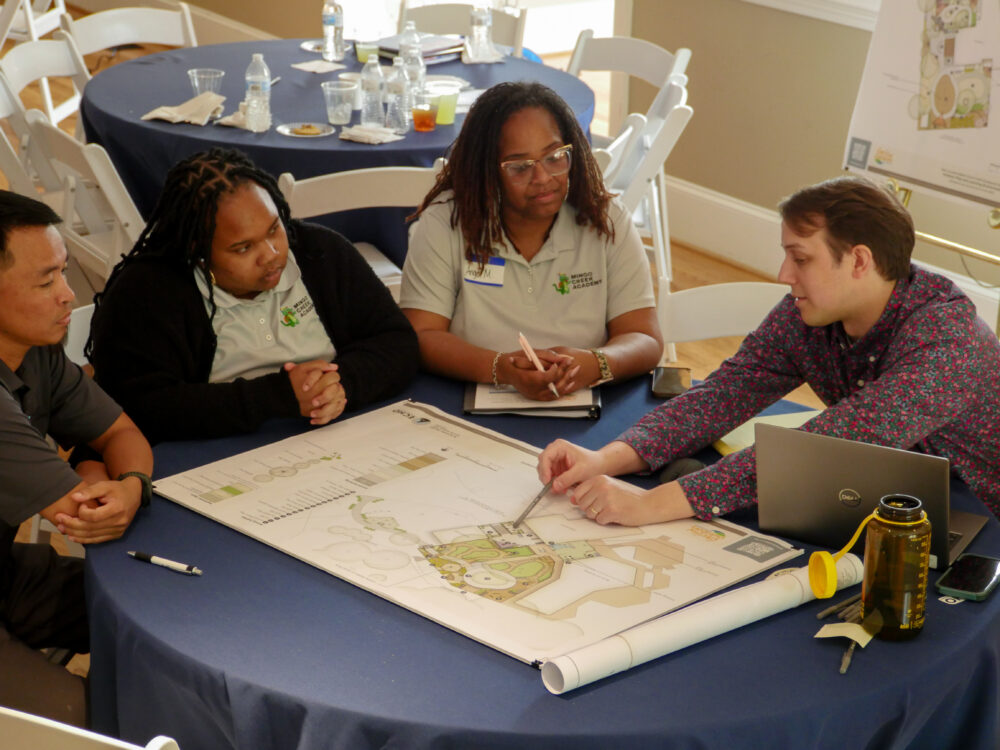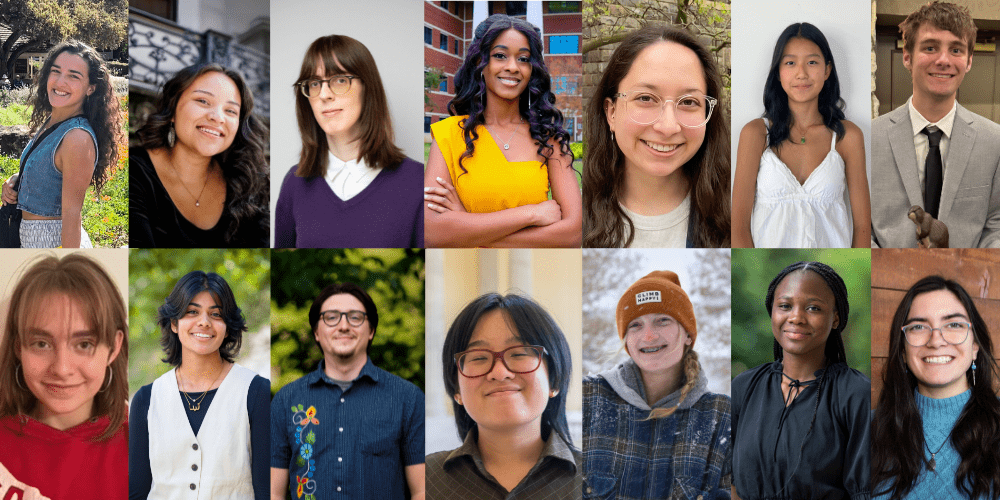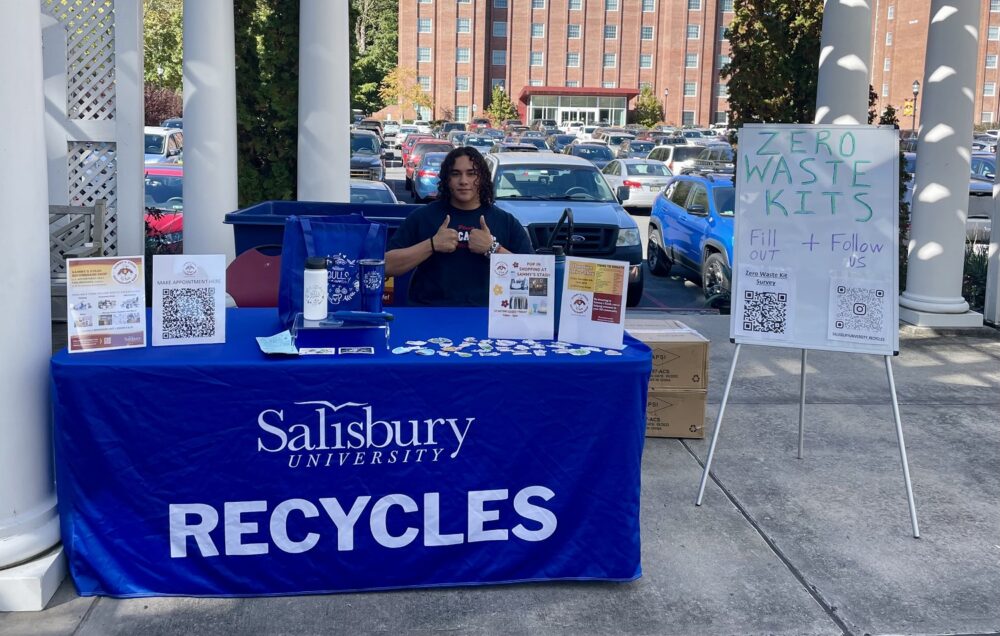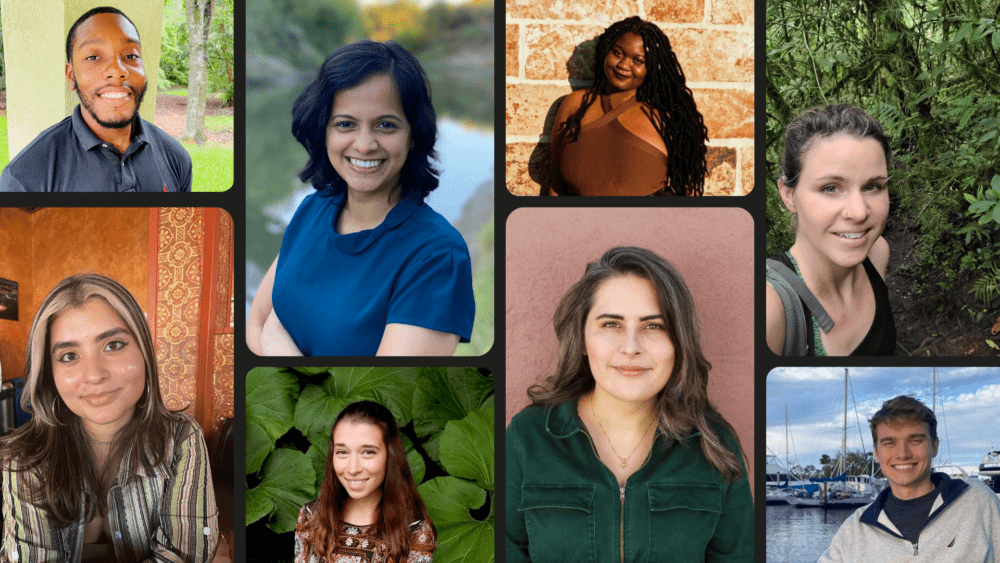We have much more to do and your continued support is needed now more than ever.
Consulting Our Crystal Ball
We convened a virtual panel to see how far the campus sustainability movement has come this decade, and make a few predictions for the future. See bios of our “speakers” at the bottom of the page.
CE: What have been the biggest shifts in thinking that you’ve seen in terms of sustainability over the past decade or so?
Craig Altemose: Seeing students start to move their efforts off-campus. There was a huge focus on on-campus sustainability when I first got involved at Harvard, and thankfully that’s still going on. But as more and more administrators have signed on and have started working to incorporate sustainability in university operations, the students are helping to implement but also coordinating projects on the local or state levels. They lobby, they advocate, they push legislation that they’re helping to write. To me, that’s the emerging trend, to see the campus as just part of their work. Pushing the administration to make big commitments is important, and now that administrators are excited and eager to take on that role, there’s less pushing and more working with them to expand efforts and share ideas.
Antonio Flores: My sense is that there have been at least three major shifts. The first is the fact that people are moving from awareness to action. People are more aware of their personal role and responsibility for a sustainable world, but they are also now replacing high energy appliances with low ones, using less water, replacing gas guzzlers, all those behaviors that deal with consumption. Another is going from a local to a global mindset. Many of the world leaders are in Copenhagen this week, and they are looking for new ways to organize the global village that we share. The eyes of the world are there. And all of us villagers are judging their commitments from where we are. We don’t think in purely local terms.
And the third shift is moving from the printed hard-copy to the digital technologies. The fastest-growing sectors of our economy are digital communications and distributions. E-news, e-books, a whole host of emerging products and tools are transforming our lives form a material space to a digital one. So, I think those three things inform sustainability, and are new within the last 10 or 15 years or so. They are moving us in new directions.
Robert Gottlieb: You just look at the scale and number of initiatives, and it’s a big difference in both the quality and quantity. Secondly, the institutions themselves have really embraced sustainability as part of their organizational profile. Some of their influence could be considered sort of limited, for example, there is no focus on issues like car use, parking and transportation. But a lot is happening, and it’s tied to institutional fundraising. There’s a shift, though I wouldn’t say higher education is sustainable yet. The third change, and this is true at OXY, is that when students apply to schools, “green” is one of the criteria they’re using. They want to know what kinds of food are in the cafeteria, if there’s a green dorm, and what rating the college gets from different organizations. There’s a big student push saying that’s part of what they consider.
CE: Have any developments surprised you?
Craig Altemose: I’m a little surprised that the on-campus call for carbon neutrality was never really picked up by the broader movement. I understand that the recommendations of the Intergovernmental Panel on Climate Change (IPCC) didn’t explicitly call for carbon neutrality, but pushing for climate neutrality has a stronger degree of moral clarity. Calling only for 80% reductions is kind of a signal that emitting carbon is an ok thing to do, just do it less. But when you look at other important social movements, say civil rights, we don’t call for the abolition of slavery for 80% of people. We want slavery ended for everyone. There may be interim goal lines within that, but saying that it’s wrong to emit any carbon at all is important, because that’s the end goal. There’s already too much carbon in the atmosphere – we’re past 350 parts per million – so at this point, any net positive emissions are immoral and need to be ended.
Antonio Flores: I’ve been happily surprised by the speed of the change. I think it’s been faster than anyone would have predicted ten years ago, especially in the digital realm, and on the behavior side, in individual homes. People respect concrete commitments and leadership from the governments, but right now it feels almost as if the followers are chasing the leaders: they are having to push for what they want from their governments. The political sphere doesn’t move as fast as individual people do, and I think the level of social change is happening much faster than anyone expected.
Robert Gottlieb: It doesn’t surprise me. When I was doing work in the late 80s and early 90s, the campus greening initiatives were part of a process of creating a generation of environmental activists. When the UCLA “Backyard” study was being done, one group of students had split off because they thought it was important to go out into the community and not just look inwards at the campus, so they took this environmental justice tack and worked with community groups, Latino communities. Meanwhile, the other group of students argued that they wanted to address what was happening on their own campus. There is the younger activist group that’s mobilized, but it’s also been professionalized, with the last generation’s activists now working inside the institution as sustainability coordinators and whatnot, which you need. You need administrative buy-in. The campus has an impact, and it takes both the activism component and the bureaucratic.
CE: How important is it that higher education advance sustainability, and how do you think it’s best to do this?
Craig Altemose: I think the university, like all institutions, has a responsibility to do its part. Everyone needs to. But I think universities and colleges have a very special role. Students need to know how to create the future, and the university should be offering the tools and resources to do so. In 20 years, I think every job will have some dimension in which sustainability is important. So colleges need to be looking ahead to the major changes our society might undergo. A second side of that is that universities not only have to educate in the classroom, but provide the hands-on learning that will help students experience and learn and be leaders in emerging fields. It’s bizarre that we don’t have engineering students helping to design new sustainable technologies and architects working on green buildings and business students acting as consultants with local businesses and schools to help them lower their footprint. There are really tremendous opportunities here that are being missed. Watching the university pay for outside consultants when you have professors on the campus who could help students figure out these problems and implement them on campus, and prepare for their careers while doing so–it just seems strange that we don’t do that.
Antonio Flores: As learning communities, colleges have a chance to increase the awareness and engagement of their staff on the campus and beyond to build sustainable communities. They can enhance their academic programs as appropriate. In the past, we have made it a requirement for students to have a minimum number of classes in science, in math, in English, etc., and if sustainability were made part of the curriculum as well, I think it would increase the rate of that shift. It’s the responsibility of educators to set the tenor and the pace of the country.
Robert Gottlieb: The deeper issue is going to be how campus greening can connect with larger community issues. We’ll be finding new models from within the college, where the projects that are developed play a direct role in linking the campus with the community. An example would be what Oxy is exploring with the solar arrays: what can you do that feeds the community, beyond just putting power into the grid. What about the neighbors? What about the high schools? What about job training? How else can this be a community asset? It’s part of a deeper question about institutions and their responsibility to the world and their communities. Any initiative on campus will hopefully be designed with the neighbors in mind, anything from transportation to hazard and emissions issues. What are universities doing to be part of constituency for broader social change?
CE: What do you predict over the next decade in terms of engagement with climate and sustainability on campus?
Craig Altemose: I’ll be optimistic. Like most people, I’m pretty excited about the current president. I’m hopeful that a lot of the serious money will make its way to the higher education sector so they can move forward with their plans. I’m glad there are so many of the climate action plans on campus moving into the implementation phase. I would like to predict that we will see a lot of sustainability projects incorporated into the curriculum, and hopefully every student will eventually be taking a course on sustainability, or addressing those ideas in most of their classes. It will be a stronger and more cohesive part of the students’ education. I certainly hope and expect that we’re moving into a world where sustainability and low carbon are just the defaults, they’ve filtered into our lives in a way that makes sense, so that the clean energy economy is the normal one.
Antonio Flores: I see the beginnings of a green revolution on campus that will spread. I really think it will move us from the path of economic collapse towards a healthier relationship with the planet and each other. HACU is part of that, through advocacy and institutional capacity building. We believe that all of that is going to happen, not just because we want it, but because we are going to be doing it, willing it into existence through our effort. There is no question in my mind that we have the beginnings of a green revolution emerging from our college campuses.
Robert Gottlieb: I think you’re going to see the trend continue for more comprehensive changes at the institutional level. Partly, it’s going to be good policy and ultimately good economics for the institution to move in that direction. There are examples of that. The dozens of illustrations of campuses doing things that we get weekly from AASHE or Campus Ecology are going to double and triple, and they’re going to be bigger. That trend will continue.
Panelist Information
Craig Altemose is a graduate student at Harvard who helped to plan the first Powershift in 2007. He is now the Coordinator of Students for a Just and Stable Future which is running The Leadership Campaign for 100% clean electricity in Mass by 2020.
Robert Gottlieb is Professor of Urban and Environmental Policy and Director of the Urban & Environmental Policy Institute (UEPI) at Occidental College in Los Angeles.
Antonio R. Flores is the President and CEO of the Hispanic Association of Colleges and Universities (HACU), a national organization representing approximately 450 institutions across the U.S. and Puerto Rico committed to Hispanic higher education success. His professional background includes higher education and public service at the local, state, national, and international levels.





















